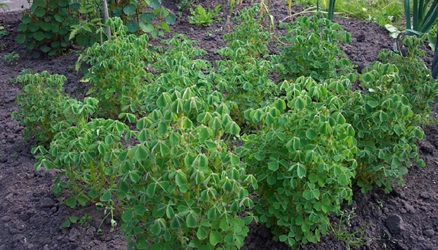Categories
Calendars
Guides
Reviews
Archive
Gallery
Articles
Ask Our Gardening Expert
Oka or New Zealand Yam (Oxalis tuberosa)
Oka or New Zealand Yam
(Oxalis tuberosa)
The stem tubers of this herbaceous perennial are used as a vegetable. This interesting plant was first grown in the Andes and introduced to Europe as competition for potatoes. It was introduced to New Zealand in the 1860's, where it is a popular vegetable, and commonly grown in Mexico.

The plant has a spreading habit, growing to 30cm tall. The tubers are 4-10 cm long and 2-3cm thick, yellow, smooth white or red skin with regular hollows. They are best eaten after storage, sunlight reduce the acidity and increase sweetness. They have a citrus tang and are crisp when lightly cooked and more floury when well cooked. Oca can be boiled, baked, fried and served like potatoes or as a dessert. In its homeland, it is second to the potato, tolerating poor soils and harsh climates and one can wonder why it is not more widely cultivated.

Oca is usually propagated by planting whole tubers, though seed is possible. It needs a long growing season, forming tubers in autumn as the day shortens. In cold climates, the foliage may be destroyed by frost before the tubers have had chance to develop. In tropical areas, where day length varies little, tubers will not set. In New Zealand, tubers are usually bought from a vegetable shop and planted in spring when frost danger is past. Tubers are planted 6cm deep, 40cm apart and 60cm between rows. Plants should be earthed up a little to encourage tuber growth. Keep beds weed free and water in dry spells. Confine them to a clearly defined area as they are likely to spread. Yams are generally free of disease. They are harvested after the first frosts have killed foliage, take care to avoid damage and leave in the sun a few days to dry off. Store in a cool, dry place.